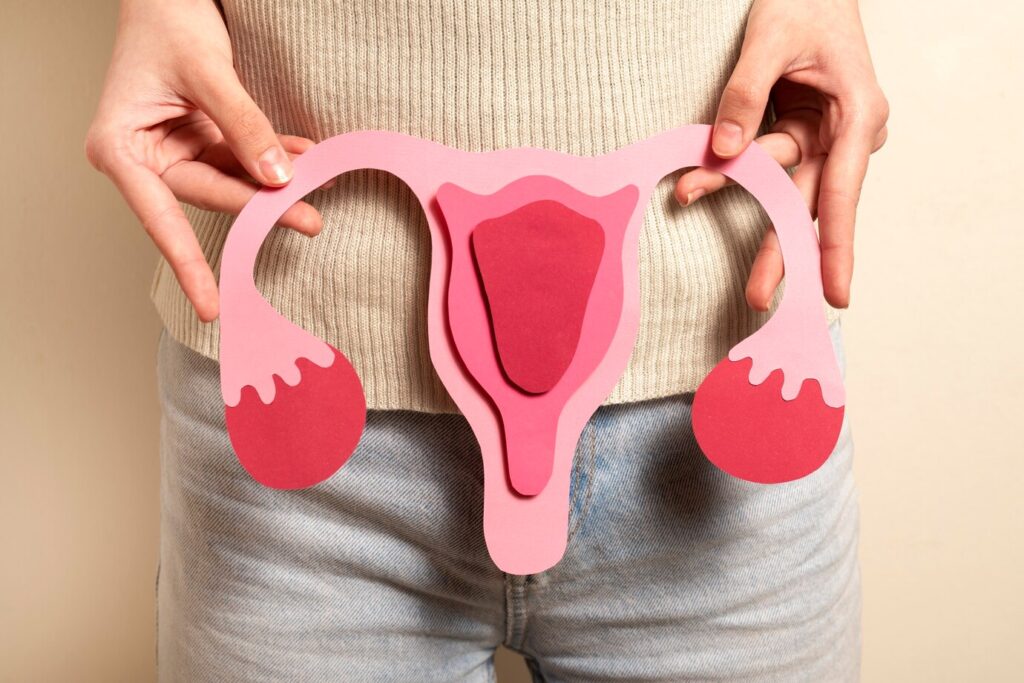Hysteroscopy for Infertility and Polyps
- Home
- Hysteroscopy for Infertility and Polyps
Comprehensive Uterine Care by Dr. Shruti Sharma
Hysteroscopy is a highly effective, minimally invasive procedure used to examine and treat the inside of the uterus using a thin, lighted instrument called a hysteroscope. At Dr. Shruti Sharma’s clinic in Karnal, we specialize in both diagnostic and operative hysteroscopy, particularly for women facing infertility issues or uterine polyps. This technique allows us to accurately detect and treat conditions such as adhesions, fibroids, or polyps—common causes of reproductive problems and abnormal bleeding. The procedure is usually done without any external incisions, leading to quicker recovery and minimal discomfort. Our experienced team ensures thorough evaluation, treatment planning, and post-procedure support tailored to each patient’s needs.
Whether preparing for pregnancy or managing unexplained symptoms, our goal is to provide effective uterine care with compassion and precision. At every step, we prioritize patient comfort, safety, and positive outcomes to help women restore their reproductive health and improve fertility.

Why Is Hysteroscopy Performed?
Hysteroscopy is performed to diagnose and treat problems inside the uterus that may affect a woman’s health or fertility. It is commonly used to investigate causes of infertility, repeated miscarriages, heavy or irregular menstrual bleeding, and pelvic pain. One of the main reasons for hysteroscopy is to detect and remove uterine polyps, fibroids, or adhesions (scar tissue) that can interfere with conception or cause other issues. It also helps in evaluating the uterine cavity before IVF or other fertility treatments. Since the procedure allows direct visualization of the uterus, it provides accurate diagnosis and targeted treatment. Hysteroscopy is minimally invasive, safe, and effective, making it an important tool in modern gynecological care.
Conditions Treated with Hysteroscopy
Uterine Polyps
Small, benign growths inside the uterus that can cause bleeding, infertility, or miscarriage are easily detected and removed through hysteroscopy.
Infertility Investigation
Hysteroscopy helps identify uterine abnormalities like adhesions, fibroids, or septa that may interfere with conception or implantation.
Abnormal Uterine Bleeding
Hysteroscopy can diagnose and treat causes of irregular or heavy menstrual bleeding by directly visualizing the uterine lining.
Recurrent Miscarriage
Structural abnormalities of the uterus, which could lead to repeated miscarriages, can be corrected through operative hysteroscopy.
What to Expect During the Procedure?
Before undergoing hysteroscopy, your doctor may recommend a pelvic exam, ultrasound, or other diagnostic tests to assess your condition. The procedure is usually performed under local, regional, or general anesthesia, depending on your medical needs and the complexity of the treatment. During the procedure, a thin, lighted instrument called a hysteroscope is carefully inserted through the vagina and cervix into the uterus. To allow clear visualization, a sterile fluid or gas is gently introduced to expand the uterine cavity.
This helps the doctor examine the uterus thoroughly. If any abnormalities such as polyps, fibroids, or adhesions are detected, small surgical tools can be used through the hysteroscope to remove or correct them. The entire process typically lasts between 20 to 45 minutes. Most patients experience minimal discomfort, and because it’s a minimally invasive technique, recovery is usually quick with little to no downtime.
Recovery After Hysteroscopy
Recovery from hysteroscopy is usually quick.
- Most patients can go home the same day.
- Mild cramping or light spotting may occur for a day or two.
- Normal activities can usually be resumed within 24 to 48 hours.
- Patients are advised to avoid heavy exercise and sexual intercourse for a few days to allow healing.
Follow-up care is provided to monitor recovery and plan further fertility treatments if necessary.

Life After Hysteroscopy
- Improved Fertility: Many women conceive successfully after hysteroscopic treatment of polyps or other abnormalities.
- Better Uterine Health: Removal of polyps or adhesions can prevent future bleeding problems or pregnancy complications.
- Minimal Downtime: Quick recovery allows patients to return to normal life within a short period.
FAQ: Hysteroscopy Procedures
Yes, hysteroscopy can identify and treat uterine abnormalities like polyps, fibroids, and adhesions that may interfere with conception.
No, the procedure is usually scheduled after menstruation and before ovulation to allow clear visibility of the uterine lining.
In most cases, it is done as a day-care procedure, and you can go home the same day.
Hysteroscopy can detect abnormal growths or tissues, and a biopsy can be taken during the procedure to test for cancer.
Most patients experience little to no pain. Some may feel mild cramping, especially if performed under local anesthesia.
Your doctor may advise you to avoid eating or drinking for a few hours before the procedure and arrange for someone to accompany you.
Our Latest Blog
5 Common Myths About Birth Control—Debunked
When it comes to birth control, there’s a lot of confusion…
Pregnancy Care: Essential Tips for Expecting Mothers
Pregnancy is a beautiful and life-changing journey. It’s a time filled…
PCOS and You: Tips for Managing Symptoms and Living Healthily
Polycystic Ovary Syndrome, or PCOS, is a common hormonal disorder that…



